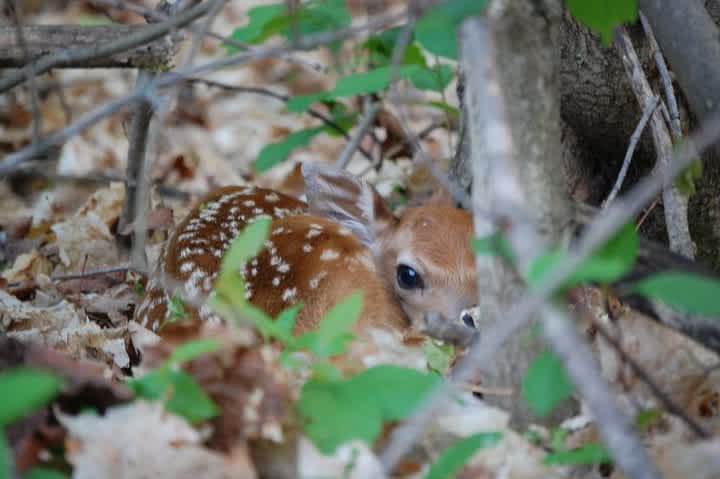Prep for Fall: Spring and Summer Food Plots and Scouting
Derrek Sigler 05.29.14

For many of us hunters, springtime and the approaching summer make us start to think about the upcoming season. Thinking about how great the fall will be is all well and good, but taking action in the spring and summer months to enhance your chances of a successful hunting season later in the year (and beyond) is even better. To that end, two of the main things hunters should have their minds on this time of year are providing nutrition for local huntable wildlife and scouting.
Feed ‘em
Have you ever been driving through cattle country and come across a feed lot? You’d know it if you had, mostly because of the odor. Come upon one on a hot summer day and you’ll want to permanently seal your nasal passages. The idea behind a feed lot is to take younger cattle and fatten them up for market. They are fed high-quality foods that get them ready for being sold. Wouldn’t it be nice if we could do that for wildlife? Well, we can—it’s just a little different.

I’m not talking about supplemental feeding, either. That can be way more trouble than it’s worth. I’m talking about food plots and curating habitat. Making sure that wildlife has proper nutrition now is very important. Think about it, if a buck’s antler growth is somewhat dependent on nutrition, when is that buck growing antler mass? Now! Food plots are as important now as they are in the fall. Plus, it gets the animals used to coming onto your property all season long, setting up patterns of behavior that will benefit you in the fall.
Crabapple trees are a great thing to plant on your property. They’re great pollinators for other fruit trees and excellent food sources themselves in fall and winter for turkeys, grouse, and other critters. Animals that overwinter better have healthier young in the spring. By adding winter browse, you’re ensuring the health of the game the following year, and now is the time to do it.
A lot of the time, when people want to put in a new food plot, they find an area and work it up right after the snow melts. They then plant it as soon as they can and go from there. A majority of the time, it doesn’t work the way they wanted. I know, I’ve done it too. As things are greening up, it’s better to let grass and weeds start growing now, spray them with a weed killer, and then plow the dead plant under. I’ve found that plowing a plot before the current plants start growing only increases the competition for your plot seed.
Food plots also work well with turkeys and even waterfowl. We had a really wet spring here in Michigan and there was significant flooding. There are spots on my property that still have standing water where there is usually nothing but dry land. As a result, I have some nesting mallards that have taken up residence. Add to that the close proximity of some fresh alfalfa fields, and I’ve managed to provide bed and breakfast to some greenheads. Seek these types of scenarios out now and you can end up with some unexpected hot spots for fall hunting.

Scout, scout, let it all out
Every hunter knows the importance of scouting. Most of us scout year-round, and one of the important things to do is take stock of the young of the year. A pair of Canada geese on a local pond have hatched a big brood of goslings and I’ve been checking other area ponds for similar activity. These little fuzz balls will readily come into the decoys in the early goose season.
I have a doe on my family farm that has served as a barometer of the health of the deer population for the past couple of years. She has had twin fawns for the past few years, and last year had triplets. I was afraid that this past winter, with the snow and cold we experienced, the does wouldn’t have much of a crop of fawns, but I was wrong.
During a tough winter, does will commonly reingest their fawns and not produce one that year. Does that produce twins or even triplets can and do produce a single fawn after hard winters, too. I was expecting to see only singles if I saw any this year at all, but I was very happy to see twin spotted veal deer on the edge of the field this spring. I know I’m supposed to say fawns, but if you’ve ever had a young, yearling deer in the fall, well, they are delicious. I’m not opposed to occasionally filling a doe tag with a young deer, especially if the mother doe is a producer of lots of fawns each year.
A walk through the woods in the spring will often result in hearing the sounds of drumming grouse, too. I’ll often return to drumming hot spots in the fall for a hunt and I’m seldom disappointed.
Keep your eyes open and the local wildlife well fed and this fall’s hunting season may prove to be your best yet.

